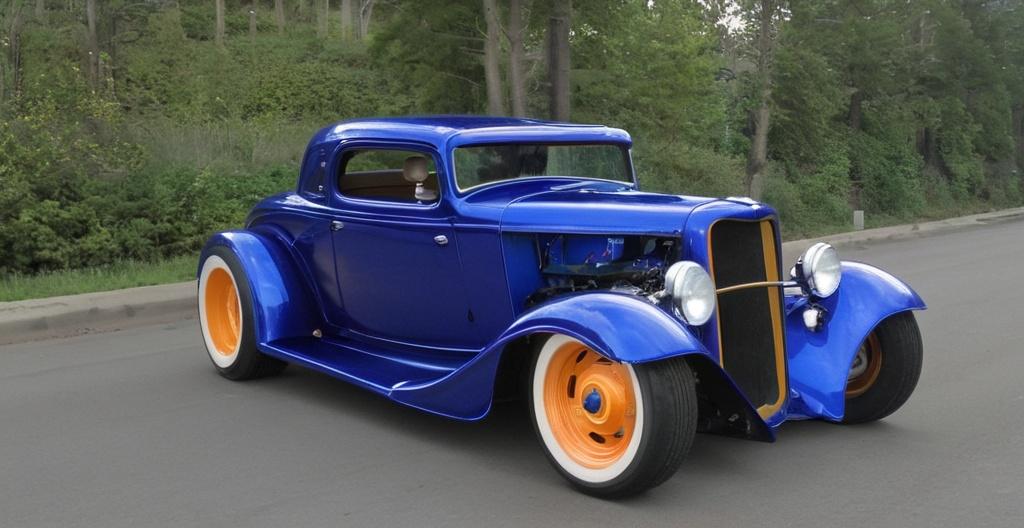Key Take Aways About Chopping and Channeling: What You Need to Know
- Chopping lowers a car’s roof for a sleeker look but affects headroom and visibility.
- Originated in the 1940s-50s for racing efficiency.
- Channeling lowers the body over the frame for a grounded appearance and better handling, impacting suspension geometry.
- Combined, these techniques create a streamlined look but demand skill and precision.
- Practicality concerns include reduced headroom and ground clearance.
- Crafting unique rides reflects creativity, skill, and commitment to customization.

Understanding Chopping and Channeling
Chopping and channeling are iconic techniques in street rodding that significantly alter a car’s appearance and performance. Both methods go beyond mere cosmetic tweaks, demanding a precise understanding of a car’s structural integrity and aesthetics. These modifications are not just about making a car look cool, but they also create a unique mix of style and engineering excellence.
Chopping: Lowering the Roofline
Chopping involves lowering a vehicle’s roofline, and if you’re thinking it sounds like a haircut for cars, you’re spot on. The goal is to create a sleeker, more aggressive profile by taking a few inches off the top. This requires cutting out sections of the roof pillars and carefully rejoining them. It’s not a job for the faint-hearted or the impatient, as the process involves meticulous metalwork and a keen eye for symmetry.
Chopping a top not only changes the look but also affects the aerodynamics. Think of it as giving your car a low-slung, mean attitude that’s ready to take on any street. Of course, with great style comes great responsibility, and there are considerations like reduced headroom and visibility that come with such a drastic alteration.
The History Behind Chopping
In the 1940s and 50s, hot rodders started chopping tops to decrease drag for racing. The technical know-how was often learned in backyard garages with a lot of trial and error. This rebellious spirit appealed to the youth of the time, and the practice of chopping became a defining feature of the street rod culture.
Channeling: Lowering the Body Over the Frame
Channeling, on the other hand, involves lowering the entire body of the car over its frame, effectively reducing the ride height. This gives the vehicle a more grounded look and can enhance its handling characteristics. Channeling requires cutting out sections of the car’s floor and repositioning the body lower on the chassis. This process also demands meticulous work to maintain the car’s structural integrity and comfort.
While it may sound straightforward, channeling involves significant challenges. The modification can affect everything from the car’s steering to its suspension geometry. But done right, it adds that powerful, low-riding aesthetic that’s irresistible to enthusiasts.
The Origin of Channeling
Channeling has its roots in the post-war era when enthusiasts were looking for ways to improve car performance by making them lighter and more aerodynamic. Initially, it was a solution for racers looking to shave off seconds, but it quickly became a style statement in the custom car culture.
Combining Chopping and Channeling
When both techniques are applied together, the results can be spectacular. The combination of a chopped roof and a channeled body leads to a car that hugs the ground with a streamlined silhouette that screams speed, even when it’s parked. It’s a double-edged sword, though. While the visual appeal is undeniable, it takes a theodolite and a mastery of welding to ensure everything fits and functions as intended.
Practical Considerations
While chopping and channeling can create an unbeatable custom look, it’s important to consider practicality. Chopped tops reduce headroom and can make it a little tricky to see those traffic lights. Channeling can affect ground clearance, making speed bumps and driveways your new arch-nemesis. Balancing aesthetics with usability is key, and that is where skilled craftsmanship comes into play.
The Art and Science of Crafting Unique Rides
In street rodding, chopping and channeling are more than just techniques; they represent a commitment to a hands-on approach and a love for customization. Whether you do it for the style or the improved aerodynamics, these modifications require careful planning and execution. They are a testament to the creativity and skill of rodders who dare to defy the norm and put their personal stamp on a classic ride.
While these alterations may not be for everyone, for those who take the plunge, it’s a rite of passage into the street rodding fraternity. It’s about standing out, making a statement, and driving a piece of rolling art that’s uniquely yours.
